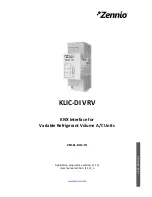
Basic Principles
BC7300
16
Four groups are distinguished in the assignment:
Functional type of the channel
Assignment level
1.
Analog outputs
assignment by bytes
2.
Digital outputs
assignment by bits
3.
Analog inputs
assignment by bytes
4
Digital inputs
assignment by bits
Analog inputs and outputs here also represent other Bus Terminals with
complex multi-byte signals (RS232, SSI sensor interface, ...)
Data consistency
Items of data are said to be consistent if their content all belongs together,
and if they are transmitted as a single block. Examples of data items that
belong together are: 1. the high and low bytes of an analog value (word
consistency), and 2. a control/status byte and the associated parameter
word for access to the registers. Data consistency in the interaction of
peripheral devices and their controllers is, in a basic sense, only assured
for a single byte. In other words, the bits of a byte are output or read in
together. Byte consistency is sufficient for handling digital signals.
Whenever values have a length of more than 8 bits, analog values for
instance, the consistency must be extended. The different bus systems
guarantee consistency up to the required length. Correct transfer of the
consistent data from the bus system master to the controller is important.
The corresponding manual for the bus system will provide a detailed
description of the correct procedure, in particular the description of the
used master interfaces. Those chapters of this manual that deal with the
fieldbus refer to the most widespread interfaces.
Complex signal processing
All the byte-oriented signal channels such as RS232, RS485 or
incremental encoders operate to some extent with byte lengths of more
than two. Apart from the difference in length, they are always handled
similarly to the analog signals.
Start-up procedure and Diagnostics
After switching on, the Bus Coupler immediately checks the connected
configuration. Error-free start-up is signalled by extinction of the red LED
“I/O ERR“. If the “I/O ERR” LED blinks, an error in the area of the terminals
is indicated. The error code can be determined from the frequency and
number of blinks. This permits rapid rectification of the error.
The diagnostic LEDs
The Bus Coupler has two groups of LEDs for the display of status. The
upper group with four LEDs indicates the status of the respective fieldbus.
The significance of the “fieldbus status“ LED is explained in the relevant
sections of this manual - it conforms to conventional fieldbus displays.
On the upper right hand side of the Bus Couplers are two more green
LEDs that indicate the supply voltage. The left hand LED indicates the 24 V
supply of the Bus Coupler. The right hand LED signals the supply to the
power contacts.
Local errors
Two LEDs, the “I/O LEDs”, in the area below the field bus status LEDs
referred to above, serve to indicate the operating status of the Bus
Terminals and the connections to these terminals. The green LED lights up
in order to indicate fault-free operation. The red LED blinks with two
different frequencies in order to indicate an error.
















































